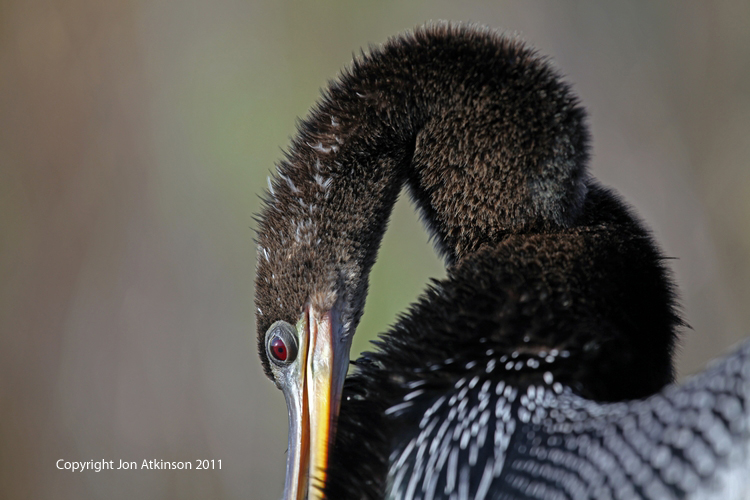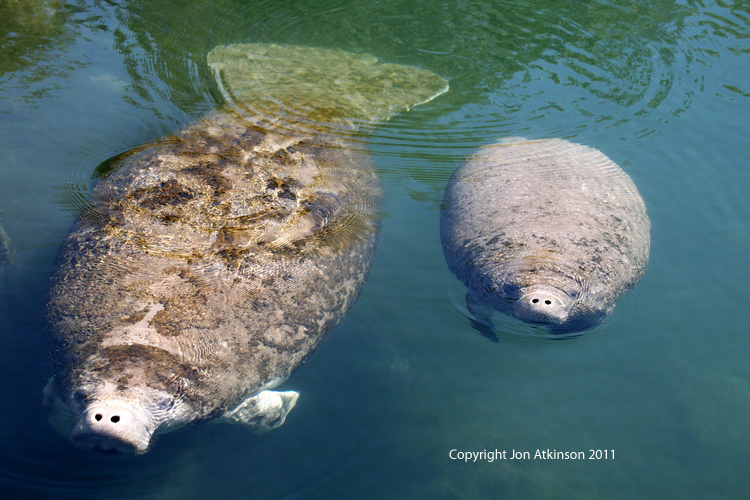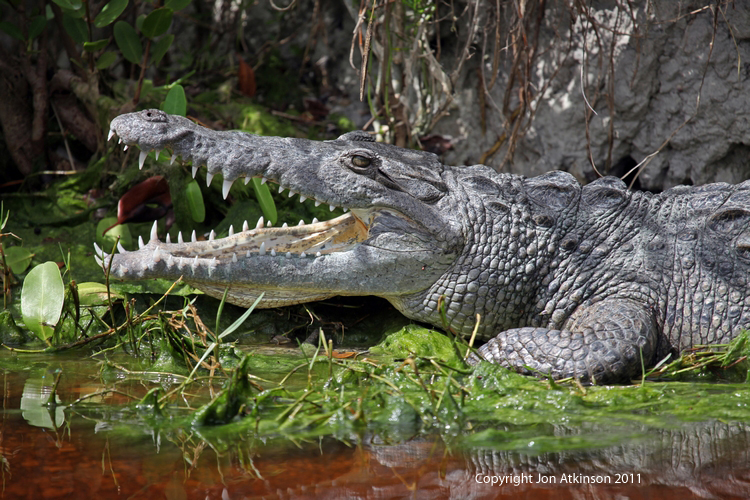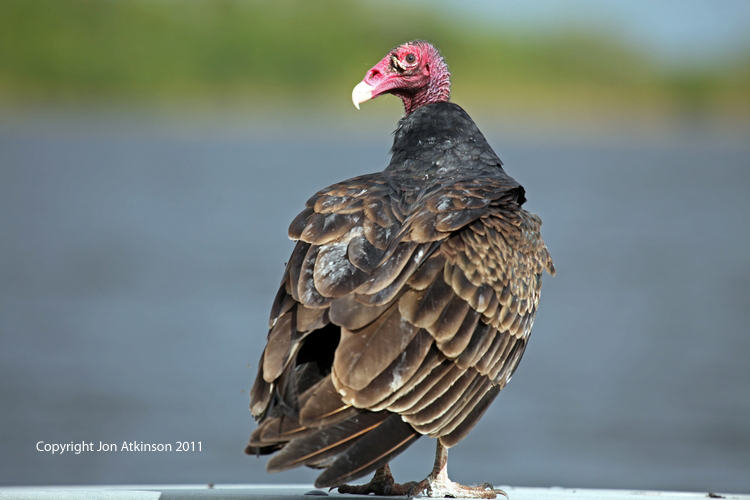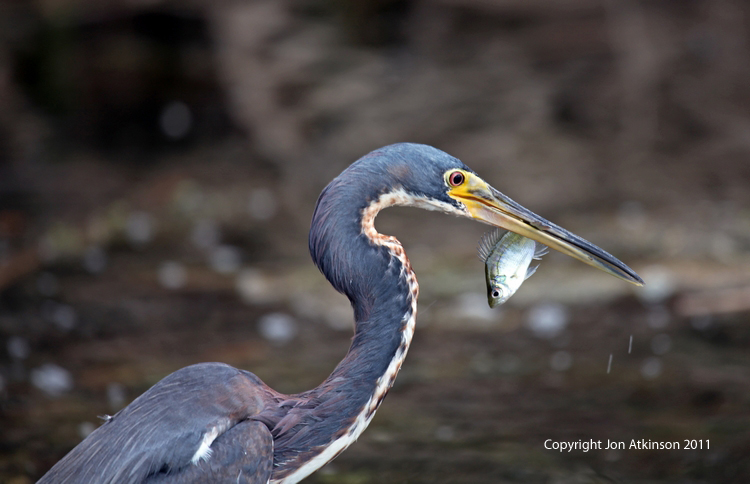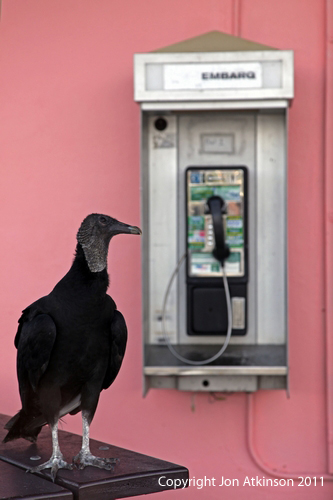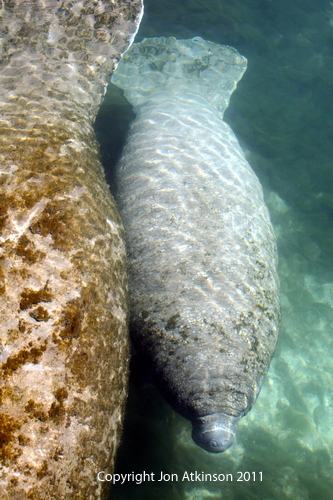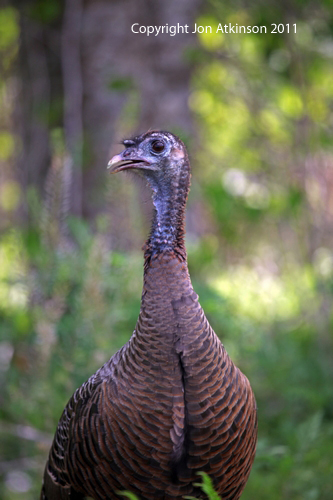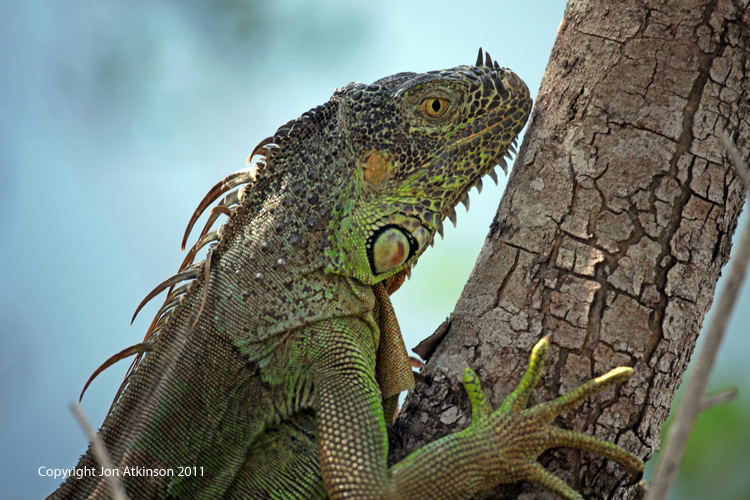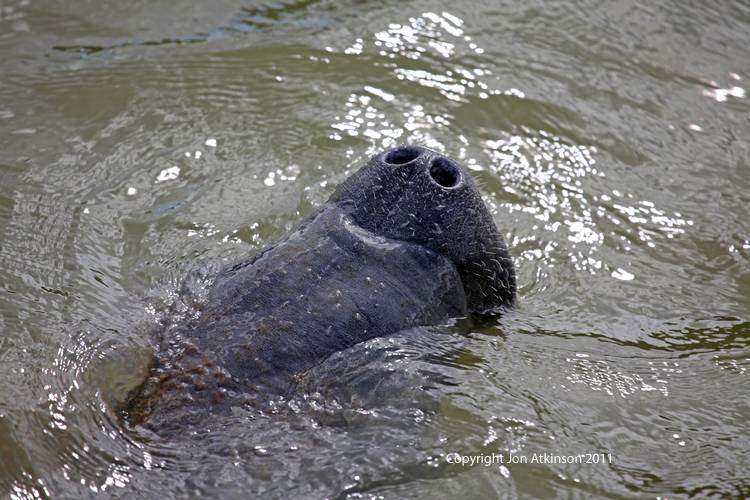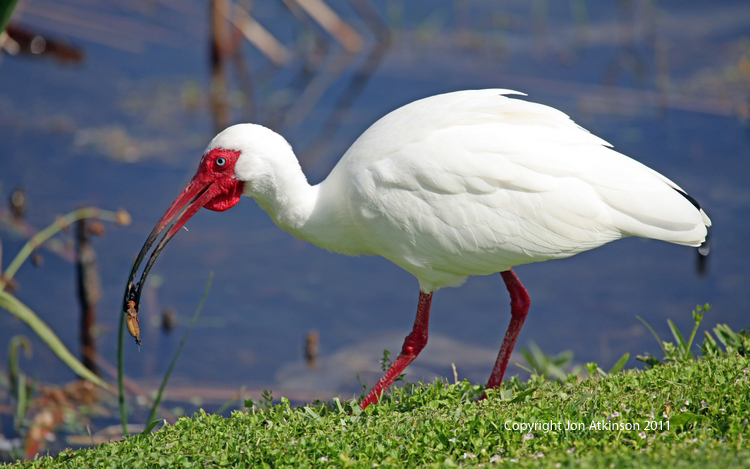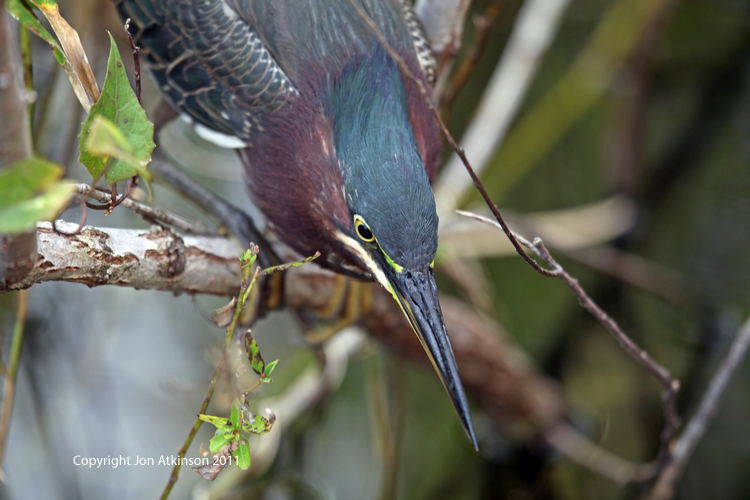Florida1 -Anhinga, Everglades N.P.: The Anhinga, sometimes called Snakebird, Darter, American Darter, or Water Turkey, is a water bird of the warmer parts of the Americas. They can be found in freshwater ponds and swamps where there is thick vegetation and tall trees. |
Florida2 - Anhinga, Everglades N.P.: Anhingas use their sharp bills to spear fish, flip them in the air and swallow them head-first. Sometimes they pierce them so hard that they have to return to shore with the fish still on their bill, and bang the fish off on a rock. The Anhinga typically nests in loose groups of several to hundreds of pairs and sometimes with other colonial water birds. The nest is usually in a tree near to water or overhanging it. |
Florida3 - Manatees, Crystal River, Florida: The Florida manatee is a large aquatic relative of the elephant that can grow to 10-12 feet in length and weigh up to 1,800 pounds. They are grayish brown in color and have thick, wrinkled skin often covered by a growth of algae. They use their front flippers to help them steer or sometimes crawl through shallow water. They also have powerful flat tails that help propel them through the water. |
Florida4 - American Crocodile, Everglades N.P.: American Crocodiles are one of the larger crocodilian species with males reaching more than 5 meters in length. Their diet consists primarily of fish, and other aquatic species including turtles and crabs. They will also feed on birds normally eating at night. Juveniles take small fish and invertebrates. They are also often blamed for the disappearance of domestic animals in more populated areas. |
Florida5 - Turkey Vulture, Everglades N.P.: The turkey vulture feeds entirely on carrion. The bird is typically observed soaring above the ground, searching for food utilizing its excellent eyesight and highly developed sense of smell. The beak and talons of the turkey vulture are the weakest of all the vulture species and hence the bird will not even catch small prey .Turkey vultures can often be seen along roadsides, eating road kill, or near rivers, feasting on washed-up fish. |
Florida6 - Tricolored Heron, Orlando: The Tricolored Heron breeds in southeastern New Mexico and Texas, on the Gulf Coast, and along the Atlantic coast. It spends winters along the coast from Texas and New Jersey south to northern South America and West Indies. Typical habitats include swamps, coastal ponds, salt marshes, mangrove islands, mudflats, and lagoons. |
Florida7 - Black Vulture, Everglades N.P.: Black vultures are common in southeastern United States where they are found in forests, fields, and on the coast. Feeding mainly on carrion, and enjoying fish, black vultures are also known to supplement their diet with small amounts of vegetable matter. The black vulture flies with its wings in a flat line. Its tail is rounded like a fan, and the undersides of the wings have distinctly lighter primaries, making it look as though the outer tips of the wings are white. |
Florida8 - Manatees, Crystal River, Florida: Manatees live mainly in Florida’s coastal waters during winter where there are over 3,000 individuals. Manatees are herbivores and eat marine and freshwater plants. Adults reach maturity after a year and give birth to a single calf that weighs between 60 and 70 pounds at birth. |
Florida9 - Wild Turkey, Orlando: The wild turkey is a "chicken-like" bird, related to the grouse, quail and pheasant. It ranges through southern Canada, the U.S. and central areas of Mexico where it lives in wooded areas roosting in trees at night. It is the largest game bird in North American and adult males can be almost a meter tall (about 2.5-3 feet tall). |
Florida10 - Green Iguana, Florida Keys: Wild green iguanas are found naturally in southern Mexico, Central America, and most of South America. Feral populations can be found in parts of California, Florida and Hawaii. These populations consist of individuals that either escaped from captivity or were purposefully released by owners. They are harmful to native species as they disrupt the ecosystem, compete with native species for resources, and prey on species that are not adapted to deal with such predators. |
Florida11 - Red Eared Slider, Everglades N.P.: Red-eared Sliders spend the winter hibernating in hollow logs, muskrat burrows, or in the mud at the bottom of ponds. Sliders spend most of the summer feeding, and basking on rocks and logs. Red-eared sliders rarely leave the water entirely, and prefer quiet, freshwater ecosystems such as sluggish rivers, shallow streams, swamps, ponds and lakes with muddy bottoms and abundant aquatic vegetation. |
Florida12 - Manatee, Florida Keys: Manatees are found in the warm waters of shallow rivers, bays, estuaries and coastal waters. Rarely do individuals venture into waters that are below 68 degrees Fahrenheit. They normally rest and feed often. Manatees communicate by squealing under water to demonstrate fear, stress or excitement. |
Florida13 - White Ibis, Orlando, Florida: The White Ibis is a wading bird found in the south of the USA, where it is frequently seen on lawns looking for large insects as well as probing for prey along the shoreline. They nest in huge colonies in fresh water marshes or along the ocean coast with one group of over 60,000 individuals in the Everglades National Park, Florida. |
Florida14 - Crocodile, Everglades N.P.: The American crocodile is considered an endangered species in nearly all parts of its North, Central, and South American range. In the USA their distribution range is confined to a remnant population that lives in southern Florida. Their habitat of choice is the fresh or brackish water of river estuaries, coastal lagoons, and mangrove swamps. |
Florida15 - Green Heron, Everglades N.P.: The Green Heron is a small, stocky wading bird which is common in wet spots across much of North America. It can be difficult to see as it stands motionless waiting for small fish to approach within striking range, but it frequently announces its presence by its loud squawking. |

